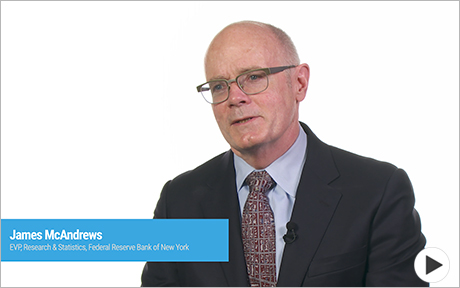The New York Fed DSGE Model Forecast–November 2017
This post presents our quarterly update of the economic forecasts generated by the Federal Reserve Bank of New York’s dynamic stochastic general equilibrium (DSGE) model. We describe very briefly our forecast and its change since August 2017.
The New York Fed DSGE Model Forecast—August 2017
This post presents our quarterly update of the economic forecasts generated by the Federal Reserve Bank of New York’s dynamic stochastic general equilibrium (DSGE) model. We describe very briefly our forecast and its change since May 2017.
The New York Fed DSGE Model Forecast—May 2017
This post presents our quarterly update of the economic forecasts generated by the Federal Reserve Bank of New York’s dynamic stochastic general equilibrium (DSGE) model. We describe very briefly our forecast and its change since February 2017. As usual, we wish to remind our readers that the DSGE model forecast is not an official New York Fed forecast, but only an input to the Research staff’s overall forecasting process. For more information about the model and variables discussed here, see our DSGE Model Q & A .
Forecasting with Julia
A little more than a year ago, in this post, we announced DSGE.jl—a package for working with dynamic stochastic general equilibrium (DSGE) models using Julia, the open-source computing language. At that time, DSGE.jl contained only the code required to specify, solve, and estimate such models using Bayesian methods. Now, we have extended the package to provide the additional code needed to produce economic forecasts, counterfactual simulations, and inference on unobservable variables, such as the natural rate of interest or the output gap. The old, pre-Julia version of the code, which was written in MATLAB and is posted here on Github, a public repository hosting service, also performed some of these functions, but not quite as fast.
The FRBNY DSGE Model Forecast—February 2017
This post presents the latest update of the economic forecasts generated by the Federal Reserve Bank of New York’s (FRBNY) dynamic stochastic general equilibrium (DSGE) model. We introduced this model in a series of blog posts in September 2014 and published forecasts twice a year thereafter. With this post, we move to a quarterly release schedule, and highlight how our forecasts have changed since November 2016.
Readers should keep in mind that the DSGE model forecast is not an official New York Fed forecast, but only an input to the Research staff’s overall forecasting process. For more information about the model and the variables discussed here, see our DSGE Model Q & A.
The FRBNY DSGE Model Forecast—November 2016
This post presents the latest update of the economic forecasts generated by the Federal Reserve Bank of New York’s (FRBNY) dynamic stochastic general equilibrium (DSGE) model.
The Macro Effects of the Recent Swing in Financial Conditions
Credit conditions tightened considerably in the second half of 2015 and U.S. growth slowed. We estimate the extent to which tighter credit conditions last year were responsible for the slowdown using the FRBNY DSGE model. We find that growth would have slowed substantially more had the Federal Reserve not delayed liftoff in the federal funds rate.
The FRBNY DSGE Model Forecast—May 2016
The May 2016 forecast of the Federal Reserve Bank of New York’s (FRBNY) dynamic stochastic general equilibrium (DSGE) model remains broadly in line with those of our two previous semiannual reports (see our May 2015 and December 2015 posts). In the past year, the headwinds that contributed to slower growth in the aftermath of the financial crisis finally began to abate. However, the widening of credit spreads associated with swings in financial markets in the second half of 2015 and the first few months of this year have had a negative impact on economic activity. Despite this setback, the model expects a rebound in growth in the second half of the year, so that the medium-term forecast remains, as in the December post, one of steady, gradual economic expansion. The model also continues to predict gradual progress in the inflation rate toward the Federal Open Market Committee’s (FOMC) long-run target of 2 percent.
Happy Fifth Birthday, LSE!

When we launched our research blog five years ago this week, we didn’t expect to set any internet traffic records while writing about economics. Still, we saw that a blog would be a good way to build familiarity with our research and policy analysis, and to share the expertise of our staff when it’s relevant to issues in the public eye. As I said back at the birth, our goal was to deliver “lively, clear, and analytically sound” posts and, in that, I think we have succeeded.











 RSS Feed
RSS Feed Follow Liberty Street Economics
Follow Liberty Street Economics